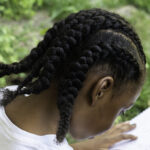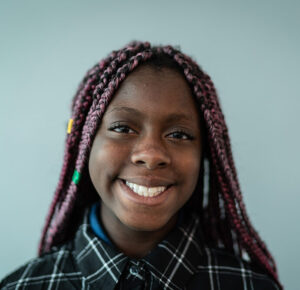Hair Care and Caregiving: Celebrating Textured Hair
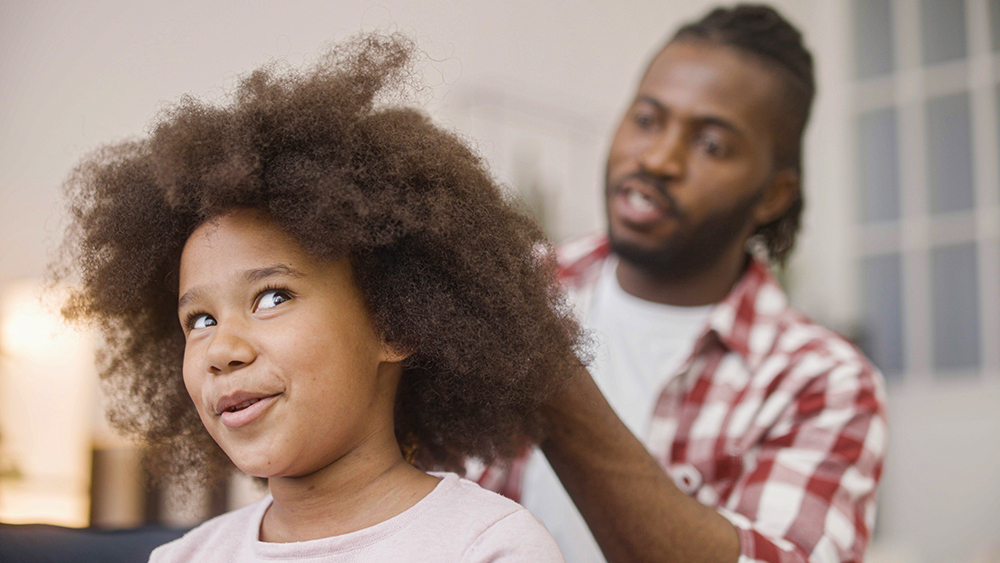
Our hair serves as an important visual marker of our personal identity and self-expression. Styling practices are typically determined by individual hair characteristics and preferences, but they also tend to be influenced by prevailing cultural trends. In a deeper sense, hair connects us to our heritage and remains a source of pride in many cultures.
Children will feel comfortable and confident when caregivers celebrate their cultural identities. When their hair is properly cared for, the impact can be truly meaningful in helping their self-esteem thrive. Read on to discover what makes hair care such a significant part of caregiving, as well as some tips for caring for textured hair. Plus, understand how caring for textured hair stretches far beyond the hair itself.
The Importance of Celebrating Cultural Identity
First of all, why is the right hair care important? “Hair is more than just an aesthetic feature of how we show up in the world,” says Dr. Abyssina Washington Tabron, Vice President of Clinical Engagement and Diversity, Equity, Inclusion and Belonging at KVC Health Systems.
“Hair is an important part of our cultural identity, how we take pride in our cultural expression and even a reflection of the attention and care we are given at home.”
We live in increasingly diverse communities, and that’s awesome! However, within that diversity, not everyone has the same awareness of the details and nuances in how people express their cultural traditions and identities. “When children come into care with families who may not have a detailed awareness or experience in caring for textured hair there can be missed opportunities to fully embrace and celebrate cultural identity,” Dr. Tabron says.
Hair care is about so much more than hair itself. It’s about culture, confidence, community and connection. Culturally-attentive caregiving sends a strong message to children: you matter, and every part of you is worth caring for.
Healing Trauma & Strengthening Bonds
 Taking care of children’s hair can play a crucial role in promoting healing through possible endured trauma. Textured hair care routines can provide a safe and comforting space for children to feel nurtured, leading to a sense of security and stability. This can help children process and heal from any trauma they may have experienced, as they feel supported and loved by their caregivers. Additionally, the act of caring for hair can be a bonding experience between caregivers and children, further strengthening their relationship and promoting healing.
Taking care of children’s hair can play a crucial role in promoting healing through possible endured trauma. Textured hair care routines can provide a safe and comforting space for children to feel nurtured, leading to a sense of security and stability. This can help children process and heal from any trauma they may have experienced, as they feel supported and loved by their caregivers. Additionally, the act of caring for hair can be a bonding experience between caregivers and children, further strengthening their relationship and promoting healing.
It is essential for every caregiver to understand how cultural identities are expressed to fully celebrate and respect a child’s background, because it’s “a demonstration of care shown to the child,” Dr. Tabron affirms. Understanding this importance fosters a more open and mindful attitude toward diverse cultures and communities, and allows us to understand the connection to identity, community and pride that comes with caring for children with textured hair.
History of Common Textured Hairstyles
History provides a rich look into the significance of hair across cultures. Research finds that for thousands of years, hair has symbolized ethnicity, religion, age, tribal affiliations, social and marital status and more. Throughout the years and even today, hairstyles allow diverse groups to define and celebrate their unique identities and heritage.
More than just an aesthetic look for modern fashion, many hairstyles drew inspiration by culturally significant events in our histories. A few popular styles include:
Cornrows
These tightly braided rows on the scalp date back to around 3000 BC, but in more recent history, worn as an act of resistance against enslavement and as a way to communicate methods of escape from enslavers.
Box Braids
 To protect hair and encourage natural growth, this “protective style” consists of square-shaped hair divisions at the scalp with hair bundles or extensions to add length and volume. This style has been used in Africa for over 3,500 years and remains popular today with celebrities like Beyonce and Zendaya wearing it on red carpets.
To protect hair and encourage natural growth, this “protective style” consists of square-shaped hair divisions at the scalp with hair bundles or extensions to add length and volume. This style has been used in Africa for over 3,500 years and remains popular today with celebrities like Beyonce and Zendaya wearing it on red carpets.Dreadlocks or Locs
This hairstyle features firm rope-like strands and has been used by cultures in Africa, Greece, and India since 1500 BCE. In some cultures, this style communicated age, marital status, wealth and even fertility.
Afro
The afro is a hairstyle created by natural growth of textured, curly hair that is in a full, rounded shape. The style was common in Africa but emerged in America as a symbol of Black power and pride in the mid to late 1960s during the Black Power movement.
Though wearing a certain hairstyle may not translate into the same meaning from the past, it’s important to learn the historical significance.
Find Resources in Your Community
Without experience and the right resources, caring for textured hair can be trial and error at first. Fortunately, there are people and places ready to help caregivers. Learning from others who have first-hand knowledge can be a powerful stepping stone towards building skills and confidence, Dr. Tabron says.
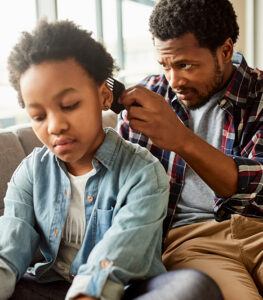 Researching people and places within your community that have experience and a good reputation for caring and styling textured hair can be a great first step. Because of their expertise, hair care establishments specializing in textured hair will be able to help with styling as well as share helpful tips for home care and recommend products specific to your child. But before booking any appointments, make sure to understand the time and investment involved; for example, some hair braiding styles can take up to five hours.
Researching people and places within your community that have experience and a good reputation for caring and styling textured hair can be a great first step. Because of their expertise, hair care establishments specializing in textured hair will be able to help with styling as well as share helpful tips for home care and recommend products specific to your child. But before booking any appointments, make sure to understand the time and investment involved; for example, some hair braiding styles can take up to five hours.
You can also ask trusted people already in your life such as people from your place of worship, neighbors, friends from school or family friends. And our KVC team is here to help too.
Textured Hair Care Tips
Learning how to style naturally textured hair is crucial in supporting children from diverse backgrounds and strengthening their confidence. Just as no two people are the same, no two heads of hair are the same: Even with similar family histories or cultural backgrounds, hair and scalp compositions are different. But following generalized textured hair advice is a great place to start if you’ve had little to no experience with textured hair. Here are a few ideas to consider:
- Wash hair less often: Shampoo can be drying, and since textured hair is naturally dry, you’ll want to avoid over-shampooing. However, the scalp still needs cleaning once or twice a week to maintain a healthy hygiene routine. For best results, focus the shampoo on the scalp and the first few inches of hair. You’ll also want to try and avoid drying ingredients like sulfates and silicones. For highly textured hair and Afro curls, try out this Pre-Poo technique to protect the hair even while shampooing.
- Keep hair moisturized: Textured hair tends to lose moisture easily, so it’s important to keep hair as hydrated as possible to avoid damage. Whether you’re pre-conditioning, conditioning after shampooing, leaving in conditioner or all three, be sure the hair stays moisturized. As an option, you can avoid rinsing all of the conditioner out of the hair while bathing, and it’ll work similarly to a leave-in conditioner.
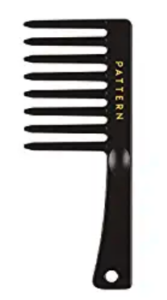 Use a detangling comb: Even with added moisture and conditioning treatments, textured and curly hair is prone to tangling. Once a leave-in conditioner or detangler is applied, use a detangling comb to work through the knots from the bottom of the hair up toward the scalp. Separating the hair into sections may help tangles release faster and more effectively.
Use a detangling comb: Even with added moisture and conditioning treatments, textured and curly hair is prone to tangling. Once a leave-in conditioner or detangler is applied, use a detangling comb to work through the knots from the bottom of the hair up toward the scalp. Separating the hair into sections may help tangles release faster and more effectively. - Prevent breakage: To keep in as much moisture as possible, it’s best to avoid using a standard bath towel for drying textured hair. Use a cotton t-shirt or towel created specifically for textured hair to prevent hair from drying out and breaking. On the same token, using a silk pillowcase will prevent friction while sleeping and cause less breakage to the hair.
- Pull hair up: Not only will tying up hair at night help keep it protected from breakage, but it will also prevent extra tangles to deal with while styling the next day. Before bed, dampen the hair, add a little leave-in conditioner or detangler, and pull it up into a ponytail or bun using a silk hair tie, satin bonnet/cap or hair turban.
Help Children Love Their Hair
Perhaps one of the most important aspects of caring for textured hair is helping children learn to appreciate their uniqueness. With the ability to build confidence and self-esteem, embracing diverse hair and learning proper maintenance can positively impact a child’s life. This is a process of finding what works best in the hair, and what makes your child feel proud to show off their natural beauty. It’s a journey that requires a caregiver’s attention and support, but it can be a positive demonstration of care and relationship-building with the child.
Another fun way to start the hair care dialogue as a caregiver is to read books or watch videos with the child in your care. Check out Hair Love, an Oscar-winning short film based on a book about celebrating a young girl’s natural curly hair. Watch it with your child so they see their hair represented in a fun animated story.
Why Hair Care Matters
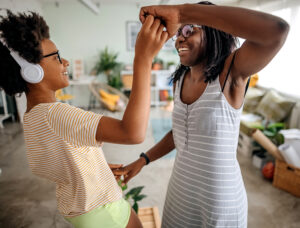
While these tips and techniques can help, it’s important to remember the why behind proper care of textured hair. Hair represents more than our physical appearance. It can connect us to our cultural histories and become a source of bonding between caregivers and children. On a day-to-day basis, proper hair care and self-care allow children to feel loved, especially in foster care situations.
“In spite of our differences, we all have the ability to care for each other in ways that honor and support what we need,” Dr. Tabron says. By caring for a child’s hair and overall outward appearance, their sense of pride can flourish.

